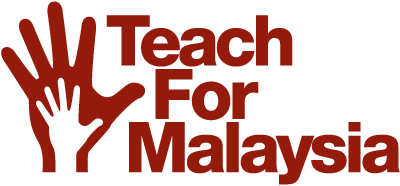Gaurav Singh left the corporate world as a software programmer with Accenture to pursue his passion for education equity as a member of the inaugural corps of Teach For India Fellows. Over the two-year Fellowship, he worked with students to achieve significant academic gains while also spearheading teacher collaboration sessions in his school.
In 2012, Gaurav founded 3.2.1. Schools, a school model inspired by high-performing charter school like KIPP in the United States. Their goal is to open 100 schools in the coming years. Gaurav will be giving a keynote speech at the Teach For Malaysia Summit 2013 this Saturday.
What are the biggest challenges within Indian schools for teachers and students?
The extensive ASER study in India found that less than 50% of Grade 5 students could read a Grade 2 text. Internationally, India was placed 73/74 countries on the PISA. The QES study by EI and Wipro found that even elite school students showed high levels of rote learning and low critical thinking. Nearly 90% of our 400 million children will eventually drop out of the school system destined to a life of poverty. India’s problem is of a lack of quality education compounded by our massive scale.
You’re a big name on the education scene, but for the benefit of those who haven’t heard, could you briefly talk about the idea behind the 3-2-1 schools? How is it different from other schools in India, and why do those differences matter?
Due to poor quality, over the past 20 years many children have left Indian public schools to enroll in private schools. Many of these cater to the BoP students and while providing a cheaper education they have failed to improve the educational outcomes.
Our mission is to create 100 high quality public-private-partnership (like US charter schools) schools over the next 15 years. Our first school opened in June 2012 in Mumbai and now serves 120 kindergarten and 120 grade 1 students. Our teachers and staff work to contextualize and implement rigorous curricula in math, language and the sciences which have been adapted from leading global curricula and are guided by a focus on discovery, conceptual understanding, and rigorous English language learning.
In addition to thirst, our instruction focuses on inculcating strong values and core life skills. Our students learn and exhibit the qualities of strong citizens: self control, ability to collaborate, critical thinking, and constant learning. We are guided by experts in the field, and a great deal of our work involves researching global best practices. Ultimately, our high quality schools will serve as lab schools which will share their success and spread high quality education throughout the country.
You were a Teach For India fellow before this. How did the Teach For India fellowship help prepare or motivate you for 3.2.1?
I remember my Teach for India kids starting the school year: 3-4 years behind grade level, battling learning disabilities and the many problems of urban slums. By the 2nd year of my Teach for India fellowship my kids, often labeled as failures, were making amazing progress. I remember them at the end of the school year–confident, resilient, redeeming their potential (progressing 3 years in 1 school year) and building the mindsets to fight their harsh reality. They taught me that if a teacher cared and inspired a passion for learning, all children could achieve.
Yet I was being told about the futility of my efforts. That’s when I saw the core issue – a lack of belief. Our system didn’t believe in the abilities of all our children. Our country needed belief centers – places that would convince us about the potential of all children. So, I decided to skip the Teach for India post fellowship placement process and take the plunge of starting my own school. I had no idea how to do it but I knew it had to be done. With that, I started my journey with 3.2.1.
What’s the best part of your day running the 3.2.1 schools?
The parts which give me the most joy are the ones which have to do with working with the teachers or with the kids. I spend a lot of my time either working one-on-one with the teachers, or supporting them in their teacher teams and the discussions, problem-solving, coaching are all what make my day. I’m also very happy when I spend time in the class observing the kids and interacting with them.
What’s the hardest part of running 3.2.1?
There are parts of my job that I enjoy less than others and anything that draws me out of school is definitely in that category. Even though fundraising, government relations etc. take a lot of my time, I enjoy them less as compared to the time I spend in school with the teachers and students.
How do you hope to inspire Teach For Malaysia at the Summit?
I plan to share my journey and some of the big lessons I have learnt and hopefully they will trigger some thoughts and sparks of inspiration in your fabulous fellows.
What advice do you have for TFM Fellows looking to make a difference in education beyond the Fellowship?
I’m inspired by this quote by Theodore Roosevelt:
“It is not the critic who counts; not the man who points out how the strong man stumbles, or where the doer of deeds could have done them better. The credit belongs to the man who is actually in the arena, whose face is marred by dust and sweat and blood; who strives valiantly; who errs, who comes short again and again, because there is no effort without error and shortcoming; but who does actually strive to do the deeds; who knows great enthusiasms, the great devotions; who spends himself in a worthy cause; who at the best knows in the end the triumph of high achievement, and who at the worst, if he fails, at least fails while daring greatly, so that his place shall never be with those cold and timid souls who neither know victory nor defeat.”
Be men and women in the arena and not just the commentators on the side.






